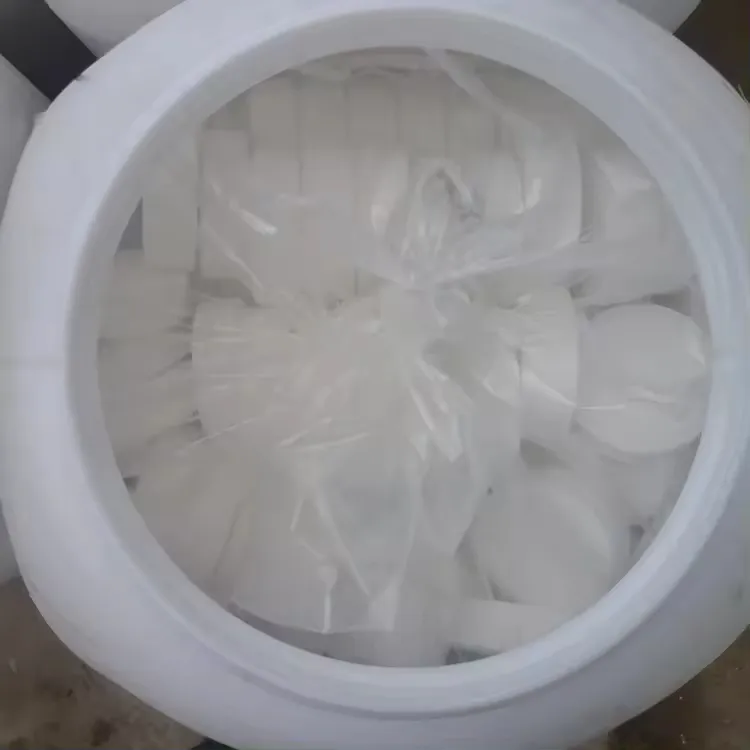



naoh 1m sds
Safety Data Sheet (SDS) for Sodium Hydroxide (NaOH) 1M
Introduction to Sodium Hydroxide
Sodium Hydroxide (NaOH), also known as caustic soda or lye, is a highly versatile industrial chemical widely used in various applications, including soap production, paper manufacturing, and in chemical processes. It is classified as a strong base with a high pH, making it essential in many laboratory and industrial settings.
Chemical Identification
- Chemical Name Sodium Hydroxide - Molecular Formula NaOH - CAS Number 1310-73-2 - Concentration 1M (1 molar)
Hazard Identification
Sodium Hydroxide is a hazardous substance that can cause severe burns and damage upon contact with skin, eyes, or respiratory pathways. The chemical is classified as corrosive and can produce heat during dilution. Key hazards include
- Eye Contact Can cause severe irritation and permanent damage. - Skin Contact Can cause severe burns; prolonged exposure can lead to permanent damage. - Inhalation May cause respiratory irritation and damage to mucous membranes. - Ingestion Highly toxic; can result in severe burns to the mouth, throat, and stomach.
Composition/Information on Ingredients
The composition of a 1M Sodium Hydroxide solution consists of 40 grams of NaOH dissolved in enough water to make one liter of solution. It is critical to handle this solution with caution and proper protective equipment.
First Aid Measures
In the event of exposure, it is crucial to take immediate action
naoh 1m sds

1. Eye Contact Rinse eyes immediately with plenty of water for at least 15 minutes. Seek medical attention urgently. 2. Skin Contact Remove contaminated clothing and rinse skin thoroughly with water for at least 15 minutes. Seek medical attention if burns or irritation occur. 3. Inhalation Move the affected person to fresh air immediately. If breathing is difficult, seek medical attention. 4. Ingestion Do not induce vomiting. Rinse mouth with water and seek medical assistance immediately.
Fire-Fighting Measures
Sodium Hydroxide itself is not flammable but can react with certain materials to produce flammable hydrogen gas. In case of fire, use appropriate extinguishing agents suitable for the surrounding materials. Always wear self-contained breathing apparatus and protective clothing when combating fires.
Handling and Storage
When working with 1M Sodium Hydroxide, follow these guidelines for safe handling
- Always wear appropriate personal protective equipment (PPE), including gloves, goggles, and lab coats. - Ensure adequate ventilation in the working area. - Store in a cool, dry location, away from incompatible substances such as acids, organic materials, and metals. - Ensure that all containers are clearly labeled, and maintain a Material Safety Data Sheet (SDS) accessible to all personnel.
Accidental Release Measures
In case of a spill, it is vital to act immediately
- Evacuate personnel from the area. - Wear appropriate PPE and contain the spill using inert absorbent materials. - Neutralize with dilute acid if necessary, ensuring to follow local regulations for disposal.
Conclusion
Understanding the properties and potential dangers associated with 1M Sodium Hydroxide is essential for ensuring safety in its handling and usage. Following the guidelines provided in the Safety Data Sheet (SDS) is crucial to minimize risks and promote a safe working environment. Both trained personnel and safety equipment should always be readily available when dealing with this corrosive substance. Being informed and prepared can greatly reduce the likelihood of accidents and injuries related to Sodium Hydroxide exposure.
-
Why Sodium Persulfate Is Everywhere NowNewsJul.07,2025
-
Why Polyacrylamide Is in High DemandNewsJul.07,2025
-
Understanding Paint Chemicals and Their ApplicationsNewsJul.07,2025
-
Smart Use Of Mining ChemicalsNewsJul.07,2025
-
Practical Uses of Potassium MonopersulfateNewsJul.07,2025
-
Agrochemicals In Real FarmingNewsJul.07,2025
-
Sodium Chlorite Hot UsesNewsJul.01,2025










